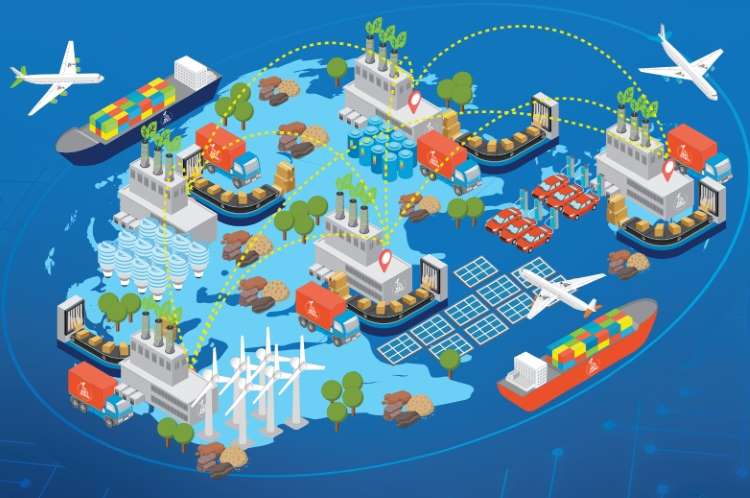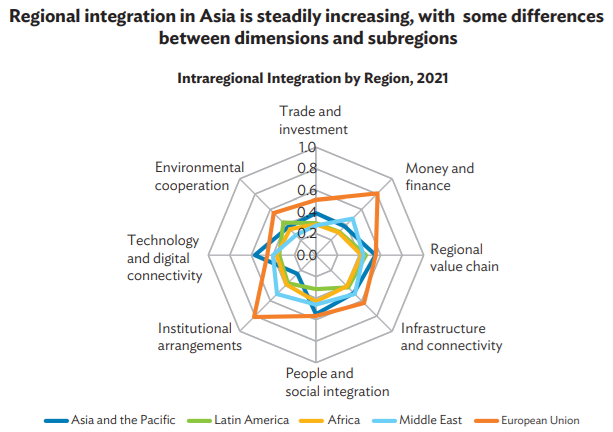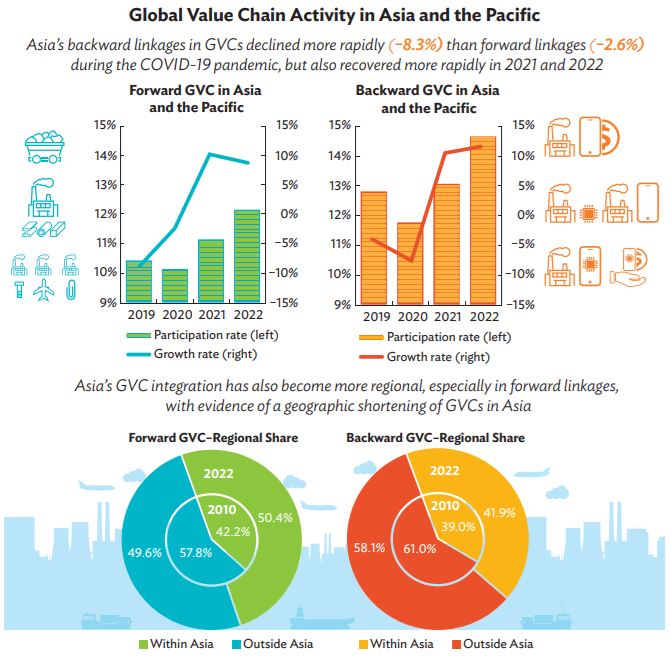
The 21st century has ushered in an era of unprecedented economic integration in Asia, a phenomenon that has the potential to reshape the global economy. This integration, characterised by intensified trade, financial interconnectivity, and the seamless movement of human capital holds the promise of catapulting the region to new heights of prosperity and resilience. Central to this narrative is the strategic role of India, alongside the collective ascent of developing Asia, navigating through the economic challenges and opportunities.
The Asian Development Bank’s (ADB) recent findings, particularly the insights from its 2024 Asian Economic Integration Report (AEIR) and the study on the implications of the European Union’s Carbon Border Adjustment Mechanism (CBAM), shed light on the dynamics of Asia’s economic integration. The reports highlight the momentum of trade and financial integration across the continent, and the nuanced challenges and opportunities that lie ahead, especially in the context of environmental sustainability and the digital revolution.
READ I Food security debate at WTO – Balancing needs, mitigating risks
Economic integration through trade, tech
Trade integration is the cornerstone of Asia’s economic resilience and growth. The AEIR 2024 stresses on the significance of intra-regional trade which has increasingly become a buffer against external shocks, underscoring the vitality of enhancing regional trade agreements and leveraging the digital economy to spur innovation and inclusivity. This integration is crucial for small and medium enterprises (MSMEs) that are now finding avenues to partake in the global value chain, heralding a new era of economic democratisation and prosperity.
One crucial aspect that can be further emphasised is the importance of enhancing digital infrastructure and cybersecurity measures across Asia. As digital transformation accelerates economic integration, ensuring robust digital infrastructure and strong cybersecurity protocols becomes paramount. This emphasis would support the seamless flow of digital information and services, crucial for the digital economy’s expansion and the protection of data across borders.


Financial integration, another pivotal aspect of Asia’s economic architecture, is highlighted for its role in mobilising resources essential for sustainable development and infrastructure projects. The seamless flow of capital across borders not only fortifies the region’s resilience against global financial volatilities but also underscores the importance of a unified approach towards fostering a stable economic environment conducive to growth and innovation.
The movement of people, driven by disparities and opportunities, presents a double-edged sword. While it can augment economic development and mitigate inequality, it necessitates robust policies to ensure that migration is a boon rather than a bane for the region’s economies. This calls for a harmonised framework that recognises qualifications and safeguards migrants’ rights, thereby enhancing the region’s appeal as a vibrant hub for talent and innovation.
The aspect of fostering inclusive growth and reducing inequality also deserves further elaboration. While the op-ed mentions the need for policies that harness the potential of migration and skilled labour mobility, expanding on measures to ensure that economic benefits are equitably distributed across populations can strengthen the narrative. This includes policies focused on education, skills development, social protection, and access to healthcare, which are crucial for reducing poverty and inequality in the wake of economic integration.
Amid these promising developments, the looming shadow of environmental challenges and the advent of policies like the EU’s CBAM present a complex scenario for developing Asia, and India in particular. The ADB’s study on CBAM’s implications reveals a stark reality: the imposition of a carbon tariff could significantly affect the competitiveness of carbon-intensive products from Asia, with India facing a considerable impact. This necessitates a swift and strategic pivot towards decarbonising production processes and embracing sustainable practices to mitigate the adverse effects of such policies and safeguard the region’s economic interests in the global market.
Another vital point to emphasise is the need for concerted efforts to address environmental sustainability and climate change within the framework of economic integration. A deep dive into specific initiatives for green finance, investments in renewable energy, and the transition towards low-carbon economies would provide a more comprehensive view. This would align with global efforts to combat climate change and ensure that economic growth in Asia is sustainable and does not come at the expense of the environment.
India’s role in all this is critical. As an emerging economic powerhouse, India is poised to leverage its vast market, technological prowess, and demographic dividend to not only enhance its regional connectivity but also to champion the cause of sustainable development. Initiatives aimed at fostering closer economic ties with Eastern neighbours and leading the charge towards renewable energy adoption exemplify India’s commitment to a sustainable and integrated future.
However, challenges abound. Infrastructure development, financial market reforms, and equitable distribution of economic benefits remain areas requiring concerted effort and strategic planning. India’s struggle to harness the full potential of economic integration involves balancing domestic reforms with proactive regional engagement, thereby ensuring its pivotal role in shaping a more connected, resilient, and prosperous Asia.
Lastly, strengthening regional cooperation and policy coordination is a critical aspect. While the article does touch upon the importance of regional integration efforts, further emphasis on the role of multilateral organisations, regional forums, and policy coordination mechanisms could illustrate how countries can work together more effectively to address shared challenges, from trade and finance to climate change and health crises.
The AEIR 2024 and the nuanced analysis of CBAM impact sends a clarion call for deeper integration and cooperation. The principles of sustainability, inclusivity, and innovation must underpin Asia’s efforts towards economic integration. For India and developing Asia, the path ahead is fraught with challenges, yet it is imbued with the promise of transformative growth and integration, offering hope for a region on the cusp of an economic transformation.
